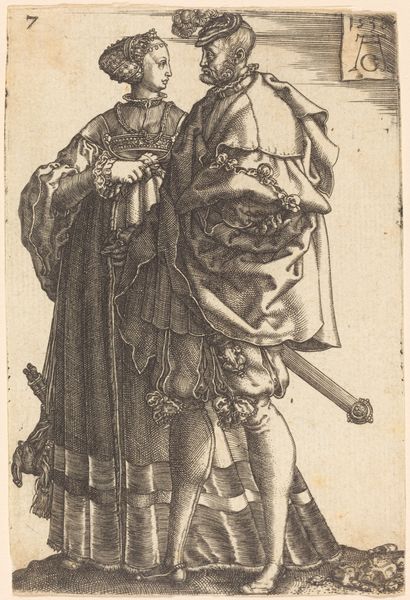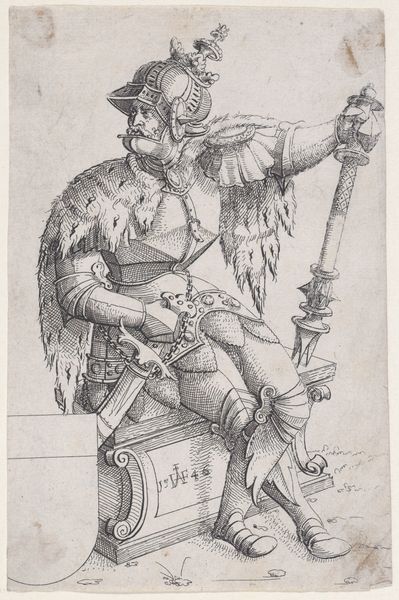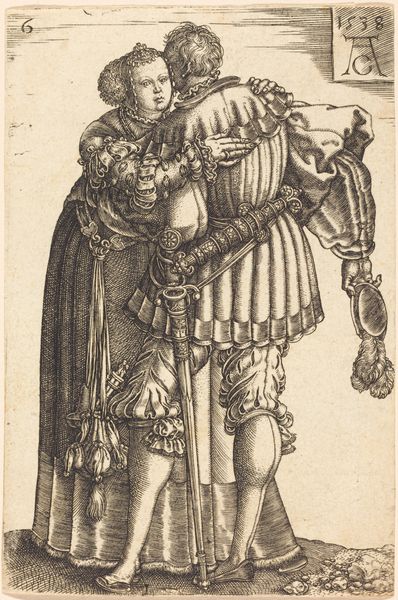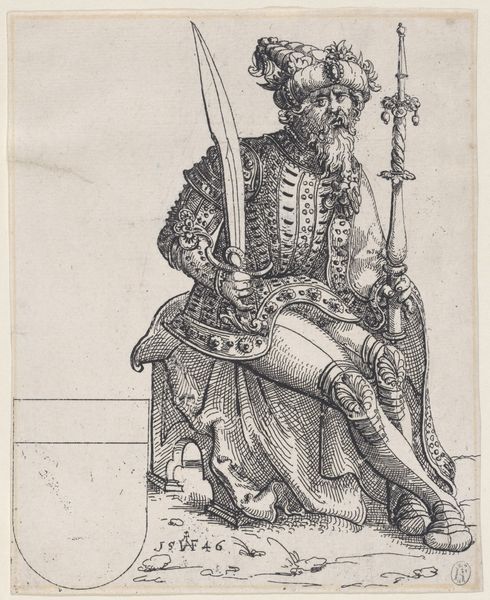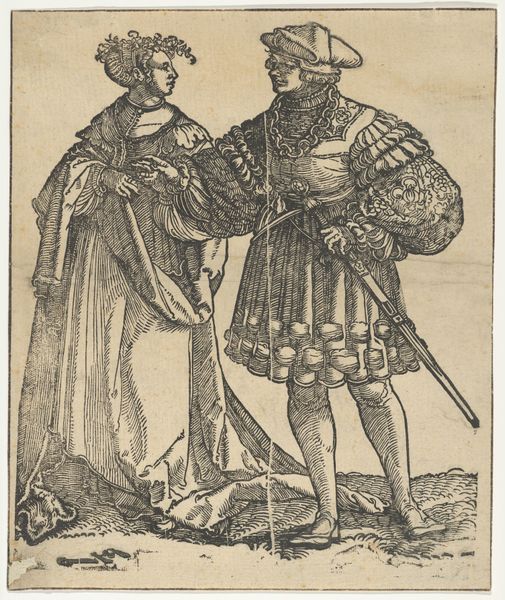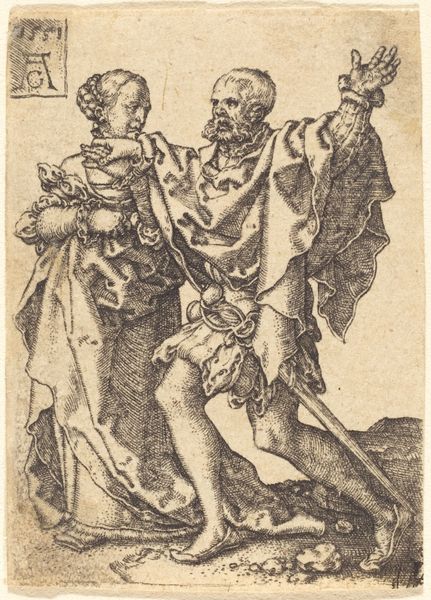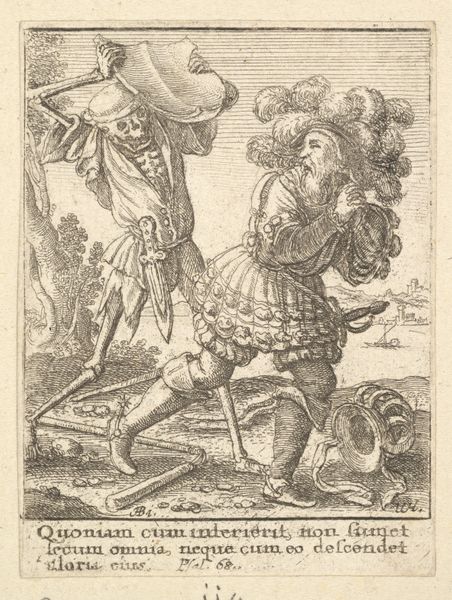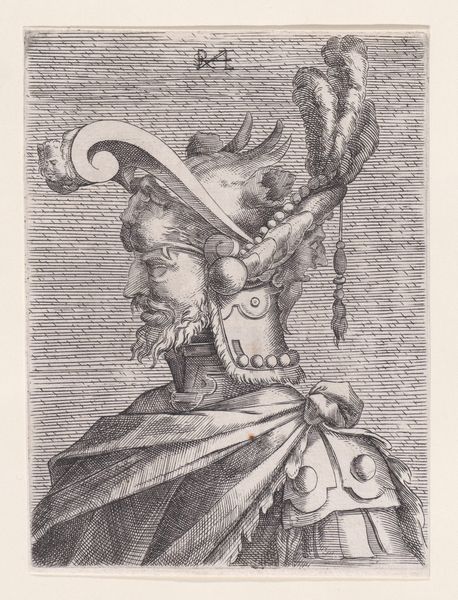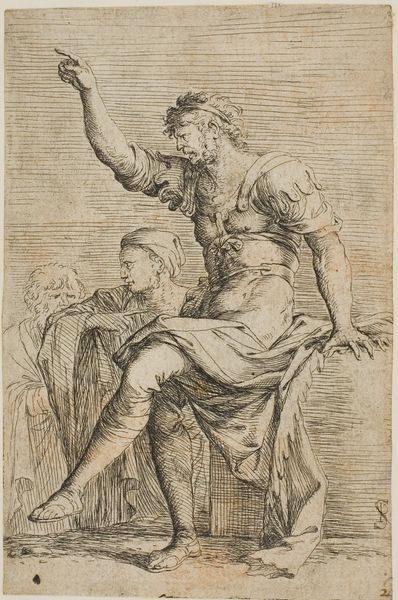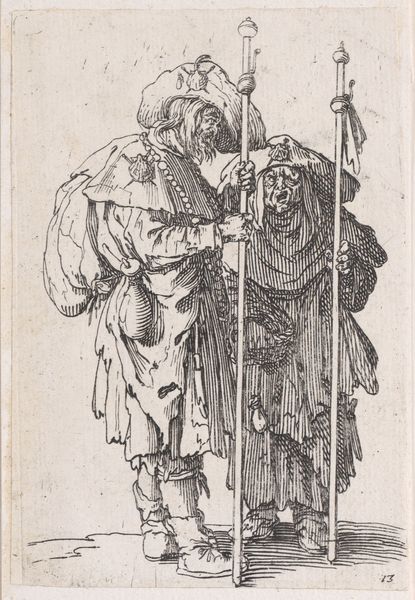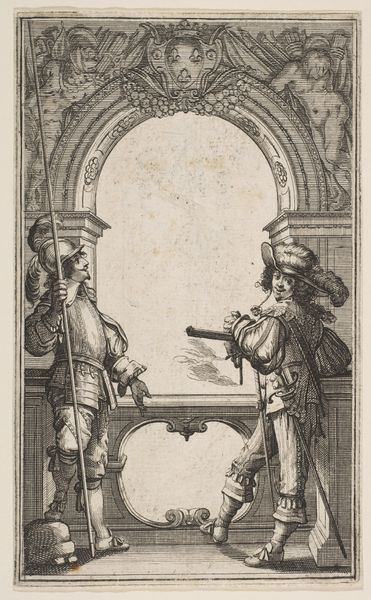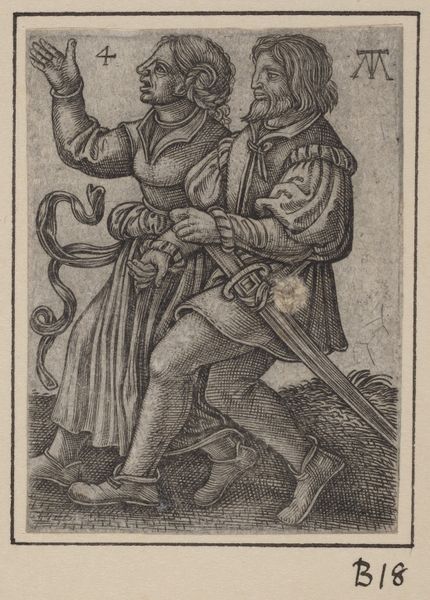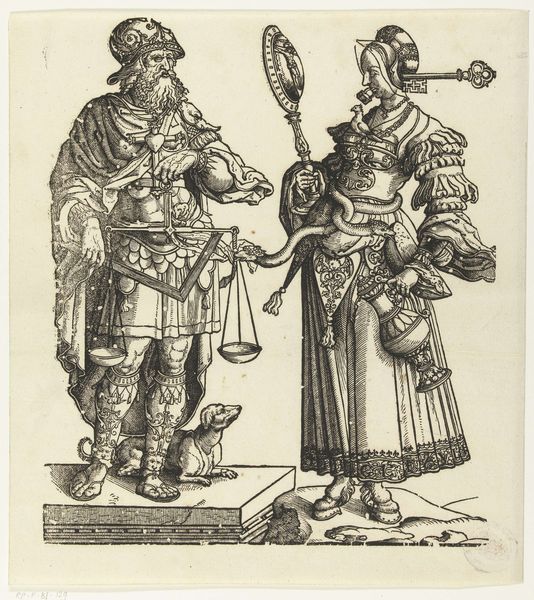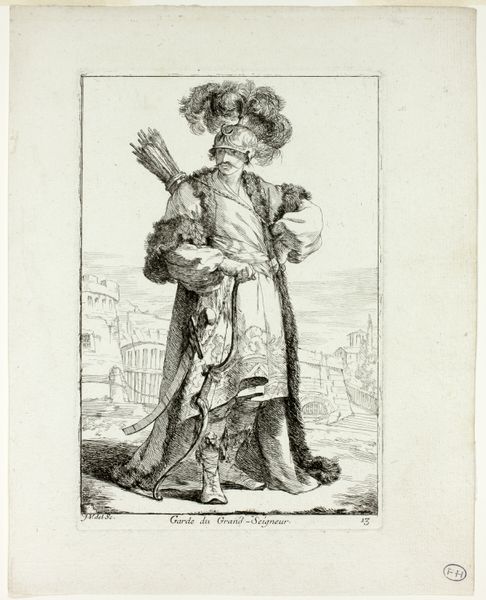
print, engraving
portrait
figuration
11_renaissance
line
history-painting
engraving
Copyright: National Gallery of Art: CC0 1.0
Editor: This is Augustin Hirschvogel's "Ferdinand I," an engraving from 1546. The figure seems weighed down, almost collapsing under the weight of his crown and robe. How would you approach interpreting this work? Curator: Let's focus on the linear elements and the formal composition. Observe the density of the lines creating textures, particularly in the king’s fur mantle and the ornate details of his garments. Do you notice how the hatching creates volume, yet simultaneously flattens the figure? Editor: Yes, the lines are so intricate and dense; it's almost overwhelming. Does the density contribute to the feeling of being burdened? Curator: Precisely. The line becomes a method of articulating the weight and significance of rule, the cross-hatching rendering each object's presence substantial, but at a great price of complexity. Note how the sword's diagonal contrasts with the verticality of the scepter and the king's rigid posture, a visual tension underscoring his authority. How might the artist be using formal tension here? Editor: So, the composition creates a sort of internal struggle, or perhaps showcases the cost of the king's power? Curator: It invites us to consider what it means to embody sovereignty, with attention paid not only to the surface presentation but also to what can only be made possible through pictorial organization. What have you gleaned from this piece through formal analysis? Editor: I see that even without color, the artist conveys a lot about power through texture, density, and the positioning of objects. Curator: Precisely. It underscores how formal elements can express deeper cultural meanings and narrative through an exercise in structural organization, inviting us to see history via close inspection.
Comments
No comments
Be the first to comment and join the conversation on the ultimate creative platform.
